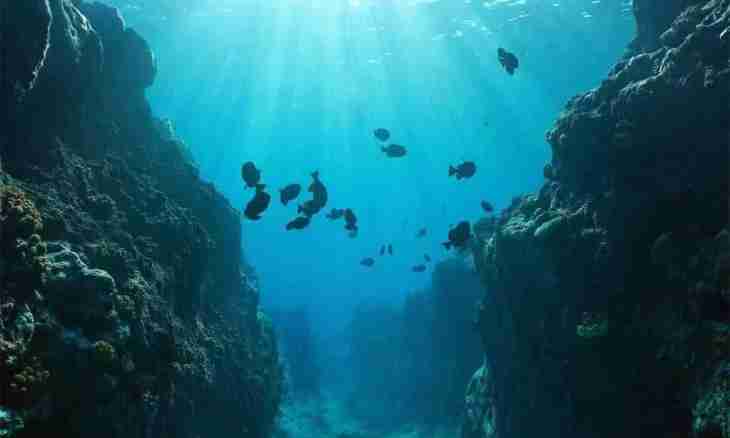The earth is a small blue ball in open spaces of boundless space. Such beautiful and such live. Water – here that invaluable treasure which made Earth the unique, unique planet. The hydrosphere of Earth makes 1 533 000 000 of cubic kilometers, and its very considerable part - 96% - falls to the share of the World Ocean.
Instruction
1. The World Ocean is the uniform and continuous water massif covering ¾ all earth's surface. This huge water area is divided into several large parts - oceans. Of course, nfrjt division is very conditional. As borders of oceans serve coastlines of continents, islands, archipelagoes. Sometimes, for the lack of those, lines are drawn on parallels or meridians. The main signs on which there is a division of water space into components are the properties inherent in any given part of the World Ocean – climatic and hydrological features, salinity and transparency of waters, independence of systems of atmospheric circulation and oceanic currents, etc.
2. Until recently division of the world water area into 4 oceans was accepted: Silent, Atlantic, Indian and Arctic though some scientists considered that it would be correct to allocate also the Southern Antarctic ocean. The basis for this purpose are the specifics of climatic and hydrological conditions of this part of the World Ocean. Generally the Southern ocean existed on maps from the middle XVII to the first quarter XX centuries. At the time of Varenius, the Dutch geographer who suggested to allocate the first the southern polar region as an independent part of the world water area Antarctica was ranked as the ocean. Its northern line was drawn on the width of the Antarctic Circle. In a scientific world long time was not a consensus on a question whether it is necessary to allocate the Southern ocean. However in 2000 the international geographical organization, being based on the new oceanologic data, announced the decision: on world maps the Southern Antarctic ocean has to appear again.
3. Components of oceans are the seas, gulfs and passages. The sea – the part of the ocean separating from its main water area islands, peninsulas or features of an underwater relief. The seas have own, other than oceanic, hydrological and weather conditions, and is frequent also an own plant and animal life. An exception of the general rule is the Sargasso Sea which has no coast at all. In total in the World Ocean there are 54 seas.
4. The seas are suburban, internal, and interisland. The suburban sea is some part of the water area of the ocean isolated from its main part by islands or peninsulas, adjoining the continental coastline and, as a rule, located on the continental shelf. Examples of the suburban seas: Barents, Chukchi, Karsky, Norwegian, East Siberian and others.
5. Inland seas are divided into inland and intercontinental. They far press in the land of one continent. To the water area of the ocean they are connected by passages or the seas adjoining to them. The seas are inland: Black, Azov, Baltic, White and others. The Mediterranean Sea, the Red Sea, the Gulf of Mexico are considered as intercontinental. It the seas adjoining to 2 or several continents and located between them.
6. The Philippine and Javanese seas belong to interisland, for example. From the main oceanic water area they are separated by islands and some features of an underwater relief.
7. The gulf – the part of any reservoir which is deeply crashing into the land, but it is free with it connecting. The passage – some rather narrow part of the ocean or sea between continents, islands or other land areas. It connecting separate parts of a reservoir or adjacent reservoirs.

